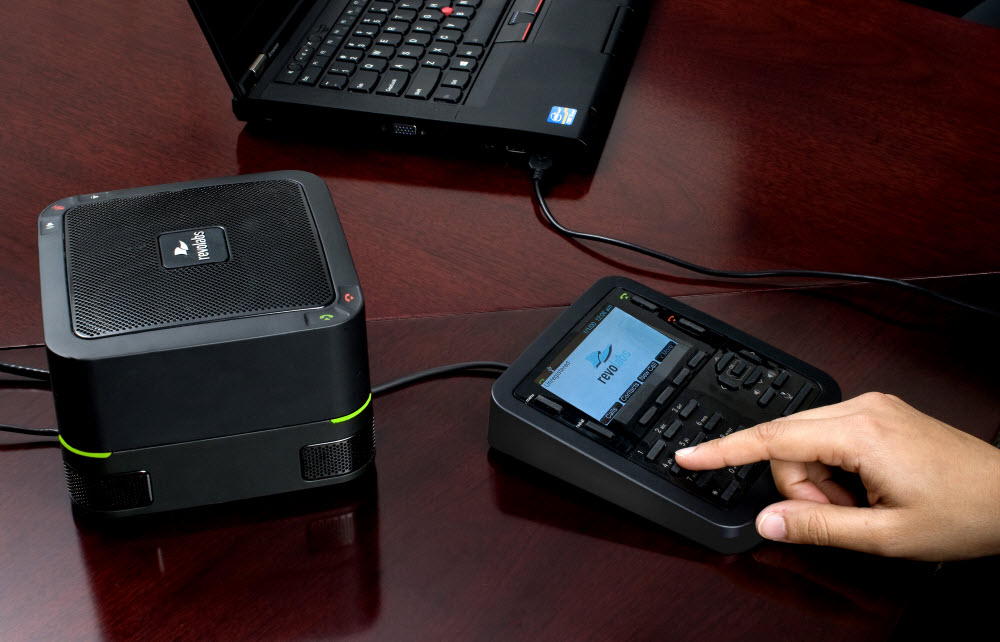How to Use Revolabs Conference Phones to Overcome Audio Challenges in Huddle Rooms
Revolabs UC Conference Phones for Huddle Rooms
Note: This is a guest post by Victoria Zona, Senior Channel Sales Manager, Revolabs
Many companies today are challenged during the typical video conference call due to the sound quality or speaker limitations of the systems they are using.
Most large companies are getting away from only utilizing large executive board rooms for conferencing.
Companies are now creating multiple smaller huddle rooms where their teams can meet and collaborate in a more intimate setting. They want conferencing solutions in these rooms that are easy to use for their teams and easy to support for their IT department.
Causes of Poor Audio Quality
Sadly, many times when users meet for a video conference all of their colleagues gather closely around a speaker phone, use a poor quality USB conference phone or even sometimes (as crazy as it sounds) use the internal speakers and microphone of their laptop or PC.
All of these scenarios provide poor audio quality.
More thought and expense goes toward a nice video signal and display than how a room should sound and pick up voices of participants.
Good Video Does Not Make Up for Bad Audio
More thought and expense goes toward a nice video signal and display than how a room should sound and pick up voices of participants.
With poor audio quality participants on both sides struggle to hear. It seems more like “surveillance” of the rooms than conferencing.
They can see what is going on but poor sound quality significantly impacts the overall effectiveness of their meeting. The best video feed cannot make up for bad audio.
How To Solve Audio Problems with Revolabs
To solve these problems corporations really need to be equipped with the latest in high quality audio communication technology.
Revolabs conference phones solve these problems.
The FLX UC product line provides:
- Professional quality audio output through tweeter and mid-woofer speaker elements,
- Four embedded microphones for full 360° coverage of audio capture,
- and Incorporates integrated acoustic echo cancellation and full duplex audio.
The FLX UC 500 is for USB softphone only calls and PC audio applications, while the FLX UC 1000 and FLX UC 1500 are two-in-one solutions that combine a USB speakerphone with a VoIP conference phone and a color dialer that can bridge calls between the two.
The UC 500 and UC 1000 are perfect for 8 to 10 participants and the UC 1500 ships with extension microphones and that can cover 16-18 participants in the room.
Whether you have a BYOD environment or a VoIP phone or both in your collaboration spaces, Revolabs UC products provide superb crystal-clear audio for all your meeting needs.
Author Bio

Victoria Zona
Senior Channel Sales Manager, North America, Revolabs
Victoria Zona has more than 20 years of experience in channel sales. In addition, she was also recognized as a CRN Channel Chief for 2014. At Revolabs she is responsible for directing and managing the North America DMR channel. Connect with Victoria on LinkedIn and Twitter



































